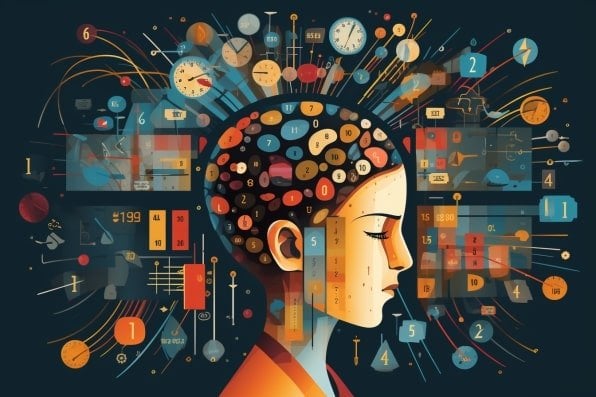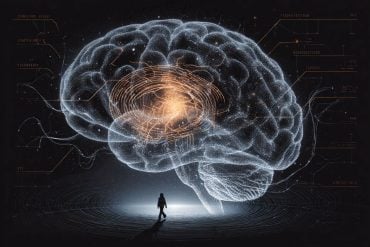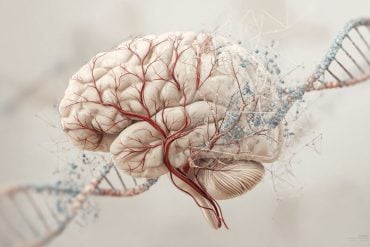Summary: Researchers discovered that electrical noise stimulation to the frontal part of the brain can improve mathematical learning.
The study focused on those who initially showed low levels of brain excitation towards math. Unlike in placebo groups, unlike in placebo groups, a significant improvement in math skills was observed after the application of neurostimulation. This novel approach could revolutionize personalized learning.
Key Facts:
- The study found that electrical noise stimulation enhanced mathematical abilities in individuals with initially low levels of brain excitation towards math.
- No significant improvement was observed in those with high initial brain excitation or in placebo groups, suggesting the technique’s effectiveness varies depending on individual brain activity.
- The research contributes to understanding how neurostimulation can be most effective, potentially paving the way for more personalized approaches to learning and cognitive enhancement.
Source: University of Surrey
Exciting a brain region using electrical noise stimulation can help improve mathematical learning in those who struggle with the subject, according to a new study from the Universities of Surrey and Oxford, Loughborough University, and Radboud University in The Netherlands.
During this unique study, researchers investigated the impact of neurostimulation on learning. Despite the growing interest in this non-invasive technique, little is known about the neurophysiological changes induced and the effect it has on learning.
Researchers found that electrical noise stimulation over the frontal part of the brain improved the mathematical ability of people whose brain was less excited (by mathematics) before the application of stimulation.
No improvement in mathematical scores was identified in those who had a high level of brain excitation during the initial assessment or in the placebo groups. Researchers believe that electrical noise stimulation acts on the sodium channels in the brain, interfering with the cell membrane of the neurons, which increases cortical excitability.
Professor Roi Cohen Kadosh, Professor of Cognitive Neuroscience and Head of the School of Psychology at the University of Surrey who led this project, said:
“Learning is key to everything we do in life – from developing new skills, such as driving a car, to learning how to code. Our brains are constantly absorbing and acquiring new knowledge.
“Previously, we have shown that a person’s ability to learn is associated with neuronal excitation in their brains. What we wanted to discover in this case is if our novel stimulation protocol could boost, in other words excite, this activity and improve mathematical skills.”
For the study, 102 participants were recruited, and their mathematical skills were assessed through a series of multiplication problems. Participants were then split into four groups: a learning group exposed to high-frequency random electrical noise stimulation, an overlearning group in which participants practised the multiplication beyond the point of mastery with high-frequency random electrical noise stimulation.
The remaining two groups, consisted of a learning and overlearning group but they were exposed to a sham (i.e., placebo) condition, an experience akin to real stimulation without applying significant electrical currents. EEG recordings were taken at the beginning and at the end of the stimulation to measure brain activity.
Dr Nienke van Bueren from Radboud University, who led this work under Professor Cohen Kadosh’s supervision, said:
“These findings highlight that individuals with lower brain excitability may be more receptive to noise stimulation, leading to enhanced learning outcomes, while those with high brain excitability might not experience the same benefits in their mathematical abilities.”
Professor Cohen Kadosh adds:
“What we have found is how this promising neurostimulation works and under which conditions the stimulation protocol is most effective. This discovery could not only pave the way for a more tailored approach in a person’s learning journey but also shed light on the optimal timing and duration of its application.”
About this neurostimulation and neurotech research news
Author: Natasha Meredith
Source: University of Surrey
Contact: Natasha Meredith – University of Surrey
Image: The image is credited to Neuroscience News
Original Research: Open access.
“Human Neuronal Excitation/Inhibition Balance Explains and Predicts Neurostimulation Induced Learning Benefits” by Roi Cohen Kadosh et al. PLOS Biology
Abstract
Human Neuronal Excitation/Inhibition Balance Explains and Predicts Neurostimulation Induced Learning Benefits
Previous research has highlighted the role of the excitation/inhibition (E/I) ratio for typical and atypical development, mental health, cognition, and learning. Other research has highlighted the benefits of high-frequency transcranial random noise stimulation (tRNS)—an excitatory form of neurostimulation—on learning.
We examined the E/I as a potential mechanism and studied whether tRNS effect on learning depends on E/I as measured by the aperiodic exponent as its putative marker. In addition to manipulating E/I using tRNS, we also manipulated the level of learning (learning/overlearning) that has been shown to influence E/I.
Participants (n = 102) received either sham stimulation or 20-minute tRNS over the dorsolateral prefrontal cortex (DLPFC) during a mathematical learning task. We showed that tRNS increased E/I, as reflected by the aperiodic exponent, and that lower E/I predicted greater benefit from tRNS specifically for the learning task.
In contrast to previous magnetic resonance spectroscopy (MRS)-based E/I studies, we found no effect of the level of learning on E/I. A further analysis using a different data set suggest that both measures of E/I (EEG versus MRS) may reflect, at least partly, different biological mechanisms.
Our results highlight the role of E/I as a marker for neurostimulation efficacy and learning. This mechanistic understanding provides better opportunities for augmented learning and personalized interventions.








